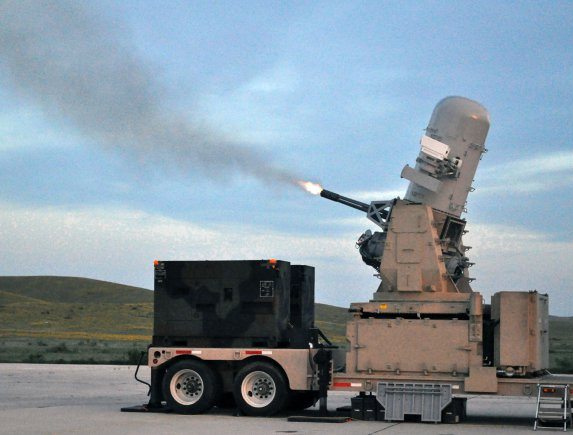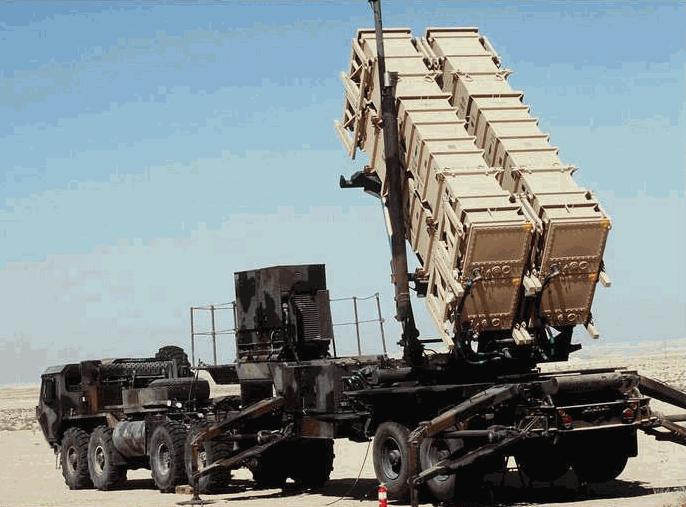A loudspeaker blared “incoming, incoming, incoming” and Soldiers immediately dropped to the ground. A Counter — Rocket, Artillery and Mortar gun whirred as the weapon system tracked the threat. A four-second burst from the Gatling-type gun filled the air with tracer fire. Then the 300 rounds crackled as they exploded looking like a fireworks show that created a wall of flack which intercepted and destroyed the incoming mortar. The Soldiers scrambled to their feet and headed toward a bunker.
This was the scene May 26, at Thompson Hill Range here as 60 air defenders from B Battery, 2nd Battalion, 44th Air Defense Artillery, from Fort Campbell, Ky., participated in a Counter — Rocket, Artillery and Mortar, known as a C-RAM, live fire. The live fire was part of their six-week pre-deployment certification to prepare them for C-RAM missions at outposts.
“The certification is going smooth. The group of Soldiers ahead of us took out every target that came toward them,” said Sgt. Orlando Rodriguez, B/2-44th, air and missile defense crewmembers team chief.
Instructors and contractors from D Battery, 2nd Battalion, 6th ADA, at Fort Sill conducted the training which is something they do about every nine months with deploying ADA units that are given the C-RAM mission, said trainer Sgt. 1st Class Kleber Soriano, D/2-6th ADA, academics section.
During the certification, the Fort Campbell short-range air defenders, who are a mix of Avenger missile crewmembers, air defense battle management system operators, and radar repairers, learn the C-RAM weapon system. The training culminates with about 10 days of live-fire training.
The biggest change from the Avenger system is learning the different procedures used by the C-RAM weapon system, Rodriguez said.
Raytheon contractor James Scott said the Avenger and C-RAM use similar electronics, but there is a different end process.
“It’s kind of like going from Microsoft to Apple,” he said.
One of the most challenging aspects of the certification is getting the gun crew and the engagement operations cell to communicate with each other, Soriano said.
“They need to learn how to work together and know what each other does,” he said.
Soriano emphasized that C-RAM is more than just an electric four-barrel gun that can fire 75 20mm high explosives rounds per second with a greater than 80 percent kill probability of mortar rounds.
Its layered network of counter-mortar radars can detect where mortars and rockets are coming from, he said. Soldiers can perform pattern analysis of the threats. This intelligence can be provided to, say, a forward operating base’s commander, who will then know where the threat is and how to address it.
Spc. Jason Campos, B/2-44th, air and missile defense crewmember, said he was looking forward to his first deployment, and using the C-RAM.
“After two years and three months, it’s really exciting for me,” he said.
Rodriguez said he believes his battery’s presence will definitely make a difference during deployment.
“I’m excited to get out there and help protect my team members from this enemy and indirect fire,” Rodriguez said.











